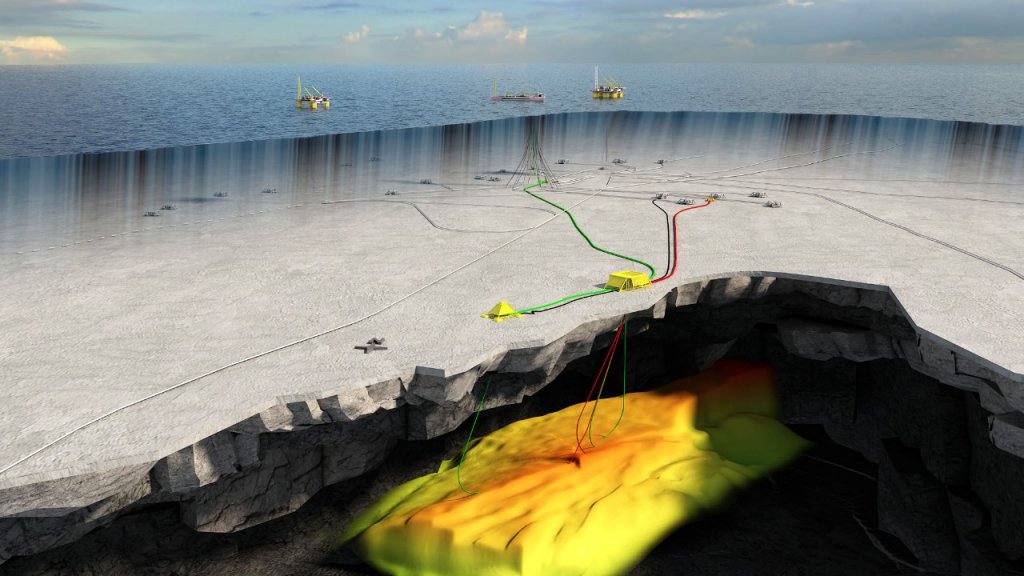Develop all profitable discoveries
Chapter 4: Recovery

The discovery portfolio at 31 December 2016 contained 77 discoveries under consideration for development. While the largest of these are in the Barents Sea, the majority are in the North Sea.
Discovery portfolio
The portfolio comprised 77 discoveries at 31 December 2016. While the largest of these are in the Barents Sea, the biggest number is in the North Sea. In addition come 145 discoveries which are not currently expected to be Commercial.
READ MORE: Large oil and gas resources in the discovery portfolio
Area solutions
Most discoveries in the portfolio will be produced by phasing in new subsea installations or by drilling wells from existing facilities. Almost NOK 2 500 billion in 2016 value has so far been invested on the Norwegian continental shelf (NCS) in the form of installations, pipelines and land-based plants. Exploiting this infrastructure efficiently is important. Many discoveries can utilise existing facilities which have spare process and export capacity.
In both the North and Norwegian Seas, proximity to infrastructure helps to make small discoveries profitable to develop. Infrastructure in the Barents Sea is limited at present. The biggest discoveries there are currently being developed with stand-alone solutions. Planning these so that they can also be utilised to develop possible new finds in the area will be important.
When additional production from a discovery is tied back to a host field, it usually opens new opportunities for the latter. Increased revenues can contribute to extending its producing life, and new measures for improved recovery can be implemented.

Most discoveries in the portfolio will be produced by phasing in new subsea installations or through wells from an existing facility.
Subsea installations
The most relevant development concept is the installation of subsea facilities phased into the existing infrastructure. This means that the development of many discoveries depends on capacity in nearby host facilities. Subsea solutions are constantly being developed and optimised, and continued advances in this area are likely to offer opportunities for cost savings
Wells from existing facility
Many of the discoveries could be developed by drilling wells to them from existing facilities. That can make even very small finds profitable if they lie close to other discoveries or fields.
Wellhead platform tied back to existing facility
The NPD has observed an increase in the number of discoveries where an unmanned wellhead platform (UWP) tied back to an existing facility is being considered as a development concept. This solution could be cost- and production-efficient as an alternative to subsea installations in shallower waters.
Fixed or floating production facility
A floating production facility is under consideration for four of the discoveries in the NPD’s portfolio, while a fixed installation is planned for two
Projects with a critical time frame
A number of developments could be dependent on a specific window of opportunity because they have to be tied back to infrastructure with a limited commercial life span. The NPD considers that a number of discoveries fall into this category, because the profitability of a development could be weakened if it is not implemented in time. Should a project be delayed for a lengthy period, it runs the risk of not being implemented.
All the discoveries with a critical window of opportunity depend on the operational life of the host facility. Found in both Norwegian and North Seas, these discoveries account for 15 per cent of recoverable resources in the total Portfolio.
The NPD considered Trestakk and Oda (formerly Butch) to fall within a critical time frame last year. Oda was important because its gas is to be injected in Ula and will have a positive effect on oil recovery from the latter. The NPD worked with the companies to secure a development, and the licensees decided in 2016 to develop both Fields.

READ ALSO: Maturing Trestakk to a plan for development and operation (PDO)
Using spare capacity in the surrounding infrastructure significantly reduced development costs. Better utilisation of host installations also helps to extend their commercial life and increase value creation from them.
Viewed overall, therefore, development of these discoveries represents substantial value both for the licensees and for society. Further utilisation of spare capacity in the existing process and transport system will thereby be the key to creating big value from the discovery portfolio on the NCS.
An area solution
Maria is a development project which lies close to established infrastructure in the Norwegian Sea. Operator Wintershall submitted a plan for development and operation (PDO) on behalf of the licensees in 2015.
This project is based on subsea installations tied back to the Kristin, Heidrun and Åsgard B facilities, and provides a good example of the way collaboration between production licences and licensees contributes to activity and value creation

Maria is being tied back to three platforms operated by Statoil. (Artist’s impression: Wintershall/Paints)
The Maria wellstream will be piped to Kristin for processing, while water for injection into the reservoir comes from Heidrun. Lift gas is to be supplied from Åsgard B via Tyrihans D. Processed oil will be transferred to Åsgard for storage and loading into shuttle tankers, while gas from Maria is piped via the Åsgard Transport System to Kårstø north of Stavanger.